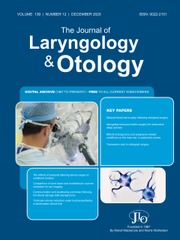No CrossRef data available.
Article contents
An evaluation of vestibular functions in substance misuse
Published online by Cambridge University Press: 18 June 2025
Abstract
The aim of this study was to evaluate the vestibular system in substance addicts.
A total of 34 substance addicts were included in the study. A demographic data form, the Dizziness Handicap Inventory, the Addiction Profile Index Screening – Short Form, the Video Head Impulse Test, videonystagmography, and cervical and ocular vestibular evoked myogenic potentials tests were administered in all participants.
A statistically significant difference was found between the study group and the control group (p < 0.05) in terms of gaze, saccade, pursuit and optokinetic results in the videonystagmography test; lateral, anterior and posterior semicircular canal gain values in the Video Head Impulse Test; P1 latency, P1–N1 interlatency, P1–N1 amplitude and asymmetry values in the cervical vestibular evoked myogenic potentials test; and N1–P1 interlatency, N1–P1 amplitude and asymmetry values in the ocular vestibular evoked myogenic potentials test (p < 0.05).
As a result of our study, it was observed that the vestibular system was affected in substance addicts.
Information
- Type
- Main Article
- Information
- Copyright
- © The Author(s), 2025. Published by Cambridge University Press on behalf of J.L.O. (1984) LIMITED.
Footnotes
Sanem Can Çolak takes responsibility for the integrity of the content of the paper
Presented as an abstract at the 15th International Ear Nose Throat and Head and Neck Surgery Congress, 9–11 June 2023.

